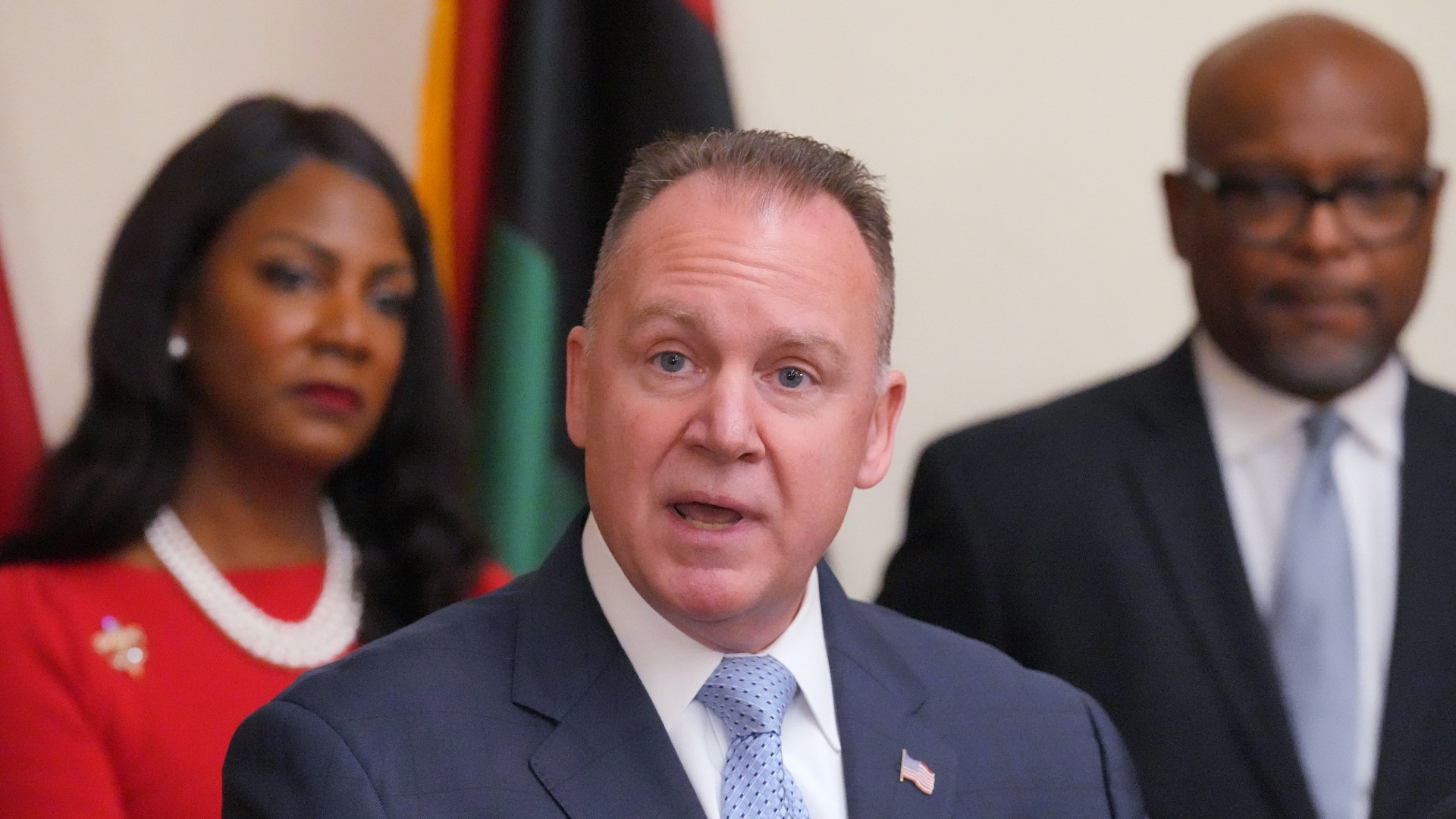ST. LOUIS — Byers' Beat is a weekly column written by Investigative Crime and Courts Reporter Christine Byers, who has covered public safety in St. Louis for 17 years. It is intended to offer context and analysis to the week's biggest crime stories and public safety issues.
I have been covering public safety in this town for close to 20 years. It’s been my beat at the St. Louis Post-Dispatch and now at 5 On Your Side.
You are the fourth St. Louis Police Department chief I’ve covered during that time—along with several interim chiefs in between.
Whenever there has been a high-profile incident involving a St. Louis police officer, whether it is their use of force that’s called into question or their conduct under pressure, your predecessors have been in front of the cameras, in front of the microphones and in front of the firing line of reporters asking questions on behalf of the public you serve.
The chiefs haven’t always been as responsive as the public thinks they should be — sometimes waiting too long to finally face the scrutiny, or not answering enough questions.
But they have done it.
We are now more than two days after one of your police SUVs crashed into a locally owned business called Bar:PM. Then, when the business owners — who also live in an apartment above the bar — came down understandably upset, one of them was arrested and charged with felony assault, accused of shoving one of your responding officers.
That owner, Chad Morris, also ended up with a bruised eye and a few other abrasions he sustained during his arrest. He spent 36 hours in jail before prosecutors reduced the felony assault charge to a misdemeanor assault charge and released him on his own recognizance even though Judge Rochelle Woodiest ordered he be held without bond based on the probable cause statement your officers gave her to get a warrant.
Don’t get me wrong, it is never OK to put your hands on an officer.
But the only evidence Morris did so rests solely in your hands.
And you can release it.
Yes, it is evidence that is part of a criminal investigation involving an assault on an officer. And yes, the Circuit Attorney’s Office would probably rather you not release it because it is evidence.
But the circuit attorney is not the chief of police.
The circuit attorney doesn’t have to answer for the conduct of their police officers to the public.
Would releasing the body camera footage into this incident truly jeopardize what’s left of this now misdemeanor case?
Whenever an incident like this happens, the community’s fragile trust in your officers is tested.
Officers who have talked to me through the years always tell me how they all get treated the same even if they had nothing to do with a negative incident — or even have issues with it themselves.
That’s why your face and your voice is so important to the community and your department at times like this.
The bar owners and their attorney have been answering questions.
Morris’ attorney, Javad Khazaeli, showed cellphone video to reporters Tuesday. It doesn’t show what happened in the alley where the alleged physical confrontation happened between the officer and Morris. It does show Morris go into the alley, shouting at officers behind him and trying to close a gate behind him. Several officers then follow Morris into the alley.
A few moments later, Morris comes out of the alley in handcuffs, his eye bruised, and is taken away in a police vehicle.
Community support for Bar:PM is also growing.
Aldermen are demanding answers.
Mayor Tishaura Jones issued a statement on the matter.
And you — the face of the department, the leader of the department — haven’t been heard or seen since it all went down and the integrity of your officers has been called into question.
Basic questions all went unanswered by you and your department for 60 hours. Questions like:
- Were the officers wearing body cameras?
- Were they turned on?
- Will you release the footage? Why or why not?
- What does the black box show about the speed of the SUV at the time of the crash?
- What did the officers say about what caused the accident?
- Were the officers given toxicology screens?
- Are there internal investigations underway into the use of force and the accident?
On Wednesday, you put Lt. Col. Renee Kriessman in front of the cameras.
She did the best she could, answering most of those questions, all of which you probably knew the answers to a few hours after the crash.
But she couldn’t answer why you weren’t the one answering the questions for the department you lead for $275,000 a year — a position the mayor appointed you to oversee.
I also asked Kriessman why it took so long for the department to answer these basic questions.
She could only say the police department has a weekly crime briefing with reporters every Wednesday, and decided it was “appropriate” to release the information during the regularly scheduled event.
This was anything but a regularly scheduled event for the St. Louis Metropolitan Police Department.
It’s not every day that a police SUV slams into a business and the owner ends up getting arrested and charged with assaulting an officer.
The public has a right to know what happened to your officers and what happened to these bar owners.
And you should be the one answering those questions.

